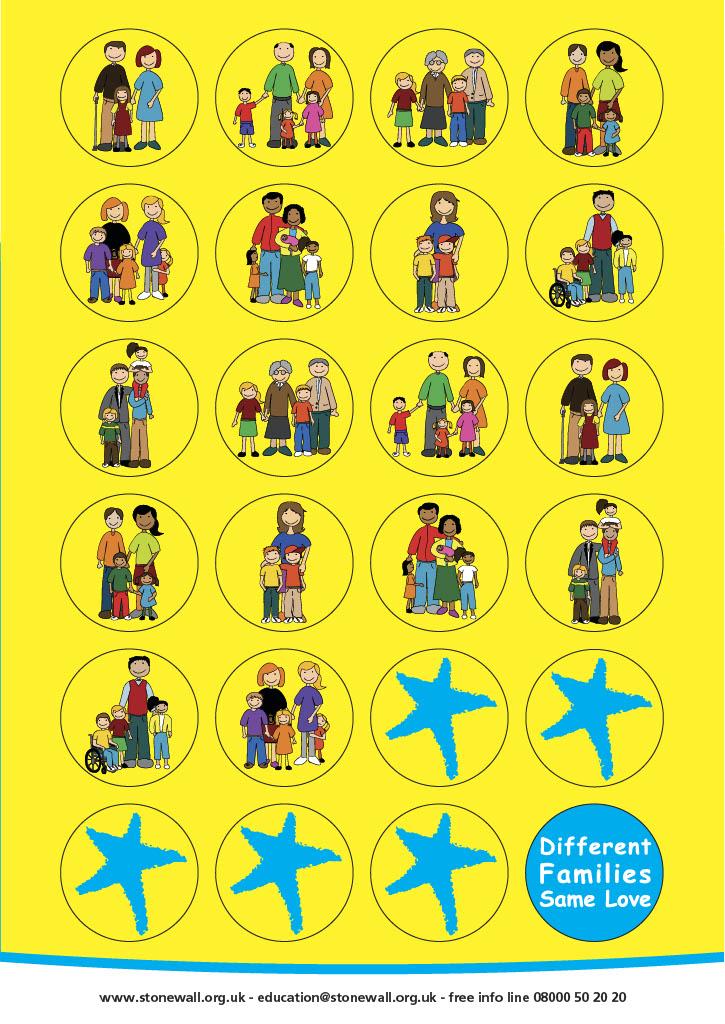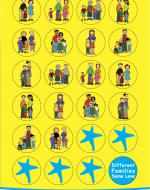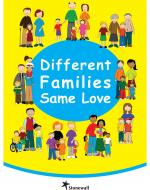Created by Samantha Murphy on Tue, 11/09/2021 - 11:43
Description:
The “Different Families, Same Love” posters are a collection of various posters that showcase family structures that are non-traditional. These posters are meant to be displayed in primary and secondary schools. They showcase family structures of all kinds, such as those with a single-parent or same-sex parents, and are meant to portray all of these different families in a positive way, in an attempt to promote equality. These posters also teach students to celebrate all families and provide an inclusive environment for those who have non-traditional families. This poster pack is part of a wide collection of guides, toolkits, and resources that the organization Stonewall provides. These resources are developed by professionals in correspondence with Stonewall and aimed at providing guidance for those who want to incorporate LGBTQ+ inclusive practices into their work or teaching (“Best Practice”).
Stonewall is a LGBTQ+ advocacy organization based in the UK and founded in 1989 in response to the enactment of Section 28 of the Local Government Act. The organization was created to campaign for legal and social equality for LGBTQ+ people across the UK and around the world (Quilliam 302). They are primarily focused on improving LGBTQ+ resources and rights at work, at school, and at home. This includes improving healthcare, reducing hate crimes, reducing discrimination in workplaces, reducing bullying in schools, improving mental health, and supporting inclusive environments in all areas (Quilliam 302).
Stonewall released these poster packs and other resources as part of their Education for All campaign. The Education for All campaign was started in 2005 to target homophobic bullying in secondary schools. The campaign extended to primary schools in 2010. Education for All marked a shift in Stonewall’s advocacy as they started focusing on cultural change in addition to legal issues. The purpose of the campaign was to provide resources and guidance to schools and teachers to inform them on how to address LGBTQ+ issues in classrooms and promote inclusive environments for students. In order to best challenge heteronormative culture and bring out equality between all kinds of sexualities and relationships, it is important to portray those identities as equal to “traditional” identities. This is exactly what Stonewall was attempting to do with their Education for All campaign and their “Different Families, Same Love” posters (See and Hunt 297-298).
Works Cited
“Best Practice, Toolkits and Resources.” Stonewall, 22 July 2019, www.stonewall.org.uk/best-practice-toolkits-and-resources.
Quilliam, Susan. “Stonewall.” Journal of Family Planning and Reproductive Health Care, vol. 39, no. 4, 23 Sept. 2013, pp. 302–303., doi:10.1136/jfprhc-2013-100736.
See, Helena, and Ruth Hunt. “Bisexuality and Identity: The Double-Edged Sword: Stonewall Research into Bisexual Experience.” Journal of bisexuality 11.2-3 (2011): 290–299. Web.



